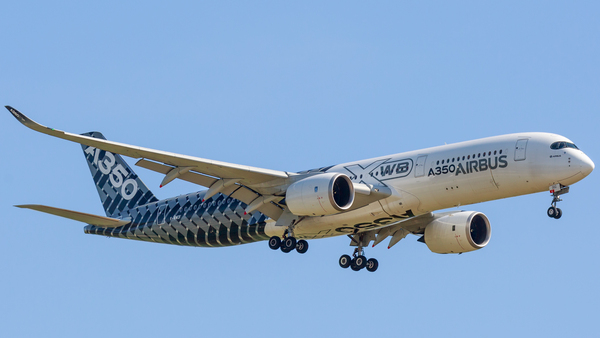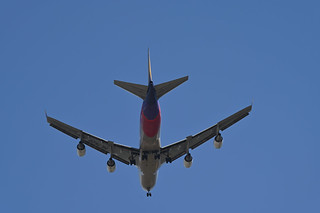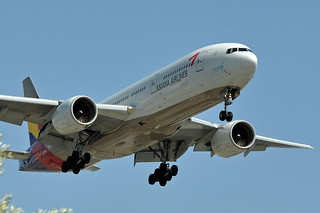Asiana A321 at Seoul on Apr 16th 2013, tail strike on landing
Last Update: January 22, 2015 / 20:15:36 GMT/Zulu time
Incident Facts
Date of incident
Apr 16, 2013
Classification
Accident
Cause
Tail strike on landing
Airline
Asiana Airlines
Aircraft Registration
HL7730
Aircraft Type
Airbus A321
ICAO Type Designator
A321
- The PF failed to maintain the proper approach speed until the flare just before touchdown, and the airplane bounced on touchdown since higher-than-normal vertical gravity was applied due to a high sink rate and increased thrust and speed just before touchdown, and
- The airplane made a second touchdown at the pitch attitude exceeding an A321 airplane's limitation and sustained a tail strike since the PF failed to keep thrust at idle and establish the proper pitch attitude during the bounce.
Contributing to this accident were
- the inadequate training program dealing with the recovery form the bounce;
- lack of pre-landing preparation due to a failure to conduct an approach briefing on pitch attitude;
- the PF's failure to properly allocate his attention due to his delegation of flight control to the pilot monitoring (PM) who failed to meet flight control requirements;
- the PM's inadequate advice and monitoring due to the PF's failure to make standard callouts;
- the disconnection of the autothrottle and a failure to manually control thrust and speed;
- and a failure to execute a go-around when stabilized approach criteria are not met.
The ARAIB reported that the first officer (32, ATPL, 383 hours total, 128 hours on type) was pilot flying for the sector, the captain (46, ATPL, 7,530 hours total, 2,892 hours on type, 722 hours in command) was pilot monitoring.
During the descent towards Seoul the captain briefed the first officer of how to use the primary flight display to manage the descent profile though advising that the first officer would not fly the landing. He suggested the first officer should fly the aircraft manually, the first officer complied and disengaged the autopilot taking manual control of the aircraft.
The aircraft subsequently positioned on radar vectors to intercept the localizer to runway 16, the flaps were configured, the aircraft established on localizer, extended the gear and was handed off to tower. Tower cleared the aircraft to land on runway 16, winds from 220 degrees at 10 knots, and advised the cloud ceiling was 200 feet AGL.
The captain called out "I have control, base ceiling is too low, 200 feet" and took control thus becoming pilot flying and first officer assuming the role of pilot monitoring.
Descending through 1209 feet AGL the captain disengaged autothrust, however, without callout. Descending through 1000 feet the first officer called "1000", the captain stated "stabilized" and continued the approach.
The first officer called out "100 above" and "minimum" when the aircraft descended through 300 and 200 feet, at 200 feet the captain called "continue, in sight", aircraft speed was 135 KIAS with Vapp selected at 138 KIAS, 2 seconds later the captain stated "runway in sight". Descending through 100 feet AGL, at 138 KIAS, the captain stated "Mmmm, this is CAT-III", the aircraft crossed the runway threshold at 59 feet AGL and 131 KIAS and descended through 29 feet AGL at 129 KIAS at a pitch angle of 3.2 degrees nose up.
The aircraft touched down 155 meters past the runway threshold at 136 KIAS, 6.7 degrees nose up, angle of attack 15.5 degrees and a vertical acceleration of +1.965G at increasing thrust.
The aircraft bounced and touched down a second time 491 meters past the runway threshold about 5 seconds after first touch down, "making a sound of crash against the ground". The aircraft was moving at 137 KIAS at 10.9 degrees nose up, angle of attack 23.2 degrees, and a vertical acceleration of +1.715G at a higher thrust than at first touch down. The aircraft rolled out without further incident and taxied to the apron.
Three flight attendants received minor injuries during the landing. The aircraft sustained substantial damage including abrasions including wear-through at the belly of the tail section 600cm long and 100cm wide and structural interior damage including cracked frames, damaged stringers, damaged and fractured cross floor beams and deformations of the aft pressure bulkhead. The repairs required involvement of the aircraft manufacturer, took three months and cost about 3.37 million US$.
The ARAIB reported that according to cockpit voice recorder the captain failed to perform an approach briefing. Both captain and first officers failed to make several standard call outs.
The ARAIB analaysed that the approach was stabilized from 1000 feet AGL to 60 feet AGL when the speed dropped below the stabilized approach criteria and reduced further to 9 knots below target at 29 feet AGL. There was no speed call from the pilot monitoring.
The ARAIB analysed: "When the PF disconnected the autothrottle and switched to manual flight during approach on the final approach course, about 3.5 NM from the runway, he did not call out, thereby leaving the PM unaware of the change. As a result, the PM failed not only to monitor the PF's failure to maintain the approach speed during his manual control of thrust, but also to make a callout about a decrease to less than the proper approach speed."
The ARAIB analysed: "According to the FCTM, in case of a bounce, the pilots should maintain pitch attitude and complete the landing, while keeping thrust at idle. On the other hand, HL7730 bounced up to about 7 ft high as it made an initial touchdown with thust increasing after flare right before touchdown, then, the airplane made a second touchdown with its thrust, speed, attack angle and pitch attitude increasing more. According to the FDR data, HL7730's pitch attitude was 6.7°, 9.8°, and 10.9° on initial touchdown, in the air after bouncing, and on second touchdown, respectively, which indicates that its pitch attitude on second touchdown exceeded 9.7°, an A321 airplane's pitch attitude limitation with the main gear oleo position fully compressed, and that the PF failed to establish the proper pitch attitude at second touchdown after bouncing."
Incident Facts
Date of incident
Apr 16, 2013
Classification
Accident
Cause
Tail strike on landing
Airline
Asiana Airlines
Aircraft Registration
HL7730
Aircraft Type
Airbus A321
ICAO Type Designator
A321
This article is published under license from Avherald.com. © of text by Avherald.com.
Article source
You can read 1 more free article without a subscription.
Subscribe now and continue reading without any limits!
Read unlimited articles and receive our daily update briefing. Gain better insights into what is happening in commercial aviation safety.
Send tip
Support AeroInside by sending a small tip amount.
Related articles
Asiana A333 at Seoul on Jun 21st 2025, engine problem
An Asiana Airlines Airbus A330-300, registration HL8286 performing flight OZ-108 from Seoul (South Korea) to Tokyo Narita (Japan) with 263 people on…
Asiana A359 at San Francisco on Feb 23rd 2025, low altitude alert on final approach
An Asiana Airbus A350-900, registration HL8382 performing flight OZ-212 from Seoul (South Korea) to San Francisco,CA (USA), was on final approach to…
Asiana A333 at Chiang Mai on Jan 24th 2025, rejected takeoff due to engine anomaly
An Asiana Airbus A330-300, registration HL7747 performing flight OZ-766 from Chiang Mai (Thailand) to Seoul (South Korea), was accelerating engines…
Asiana B744 at San Francisco on Jan 24th 2024, sparks seen from aircraft
An Asiana Boeing 747-400 freighter, registration HL7420 performing flight OZ-285 from San Francisco,CA (USA) to Seoul (South Korea), was climbing out…
Asiana B772 at Singapore on Nov 16th 2023, engine shut down in flight
An Asiana Boeing 777-200, registration HL7700 performing flight OZ-754 from Singapore (Singapore) to Seoul (South Korea) with 279 people on board,…
Newest articles
India Express B738 at Ras al-Khaimah on Apr 22nd 2025, tail strike on landing
An Air India Express Boeing 737-800, registration VT-AXZ performing flight IX-331 from Khozikode (India) to Ras al-Khaimah (United Arab Emirates),…
Delta A321 near Kansas City on Jan 3rd 2026, engine shut down in flight
A Delta Airlines Airbus A321-200, registration N349DX performing flight DL-2883 from Denver,CO to Detroit,MI (USA) with 169 passengers and 6 crew,…
Subscribe today
Are you researching aviation incidents? Get access to AeroInside Insights, unlimited read access and receive the daily newsletter.
Pick your plan and subscribePartner

ELITE Simulation Solutions is a leading global provider of Flight Simulation Training Devices, IFR training software as well as flight controls and related services. Find out more.
SafetyScan Pro provides streamlined access to thousands of aviation accident reports. Tailored for your safety management efforts. Book your demo today
AeroInside Blog
Popular aircraft
Airbus A320Boeing 737-800
Boeing 737-800 MAX
Popular airlines
American AirlinesUnited
Delta
Air Canada
Lufthansa
British Airways






